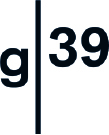Mike Murray: Building Blocks
5 April - 3 May 2008

Building blocks are measured, homogenised, smooth planed and painted wooden bricks made to encourage creativity in children. They introduce the young mind to the cylinder, the cube and the pyramid; to the components needed to make a train, a house and a car. They are man-made stand-ins for the world of chaos that surround the bewildered child. But a child’s mind doesn’t separate the world into such neat, early learning Mothercare bits. The box, the wrapping, that twig, those shoes are all fair game. The world is made up of infinite shapes and colours and the combinations of these are endless.
Mike Murray uses the same measure. His works at g39 refer to place, nature and technology. He uses the co-existence of the natural and the man-made with the tree a recurring motif, in its natural state, manipulated into boards, blocks, pencils and paper, dragged in from the wild and digitised into an animation. His work is a combination of several elements but at its core a meandering sense of rootless-ness and of this interdependence of the grown and the manufactured.
On the ground floor of the space he has produced a new work in three parts. In Broader Disputes he has taken a readymade, a found dead tree that has breached and crossed the fence on which it was resting. The tree and the ‘border’ have become one object. The resulting found object was painted pink, the extremities of the branches blend into purple, ending in the budding of random colourful geometric shapes. It has one of Murray’s original drawings caught in its braches on a scrappy wind-blown piece of paper. It is a mixture of personal references (the pink tree was a tree at Mike’s school in North Wales where kids were hung by the waistband of their pants), and a more formal sculptural aesthetic. On the wall of the gallery a roll of fencing acts as a ‘drawing’ against the white wall. This coiled grid of wire echoes the now defunct status of the rusted fence.
As we leave the space to go upstairs a light catches our eye. In the stairwell is a computer-animated tree, wind blown and so hyper-manipulated that it loses any resemblance to its natural starting point. It has no sense of gravity, of up or down and just floats on the spot like a tumbleweed.
On the first floor of the gallery mounted high on the wall is a hollow log. It is bracketed and ‘looks’ down into the space, mimicking a CCTV camera. In 2006, there was about one camera for every 14 people, making surveillance part of the nature of society in the UK. Entitled CCTreeV the structure is also part of an elaborate mechanism which recorded the artist’s own walk through the city, adding to the average 300 times we are captured on film. The gnarled log presides over a roomful of every wooden off cut in the building, the re-constituted, planed surfaces of the white cube ‘scenery’ of contemporary art.
In the top space of the gallery there is an intermittent whirring and thumping and the viewer is confronted with a desk-based machine. The ergonomics of the piece, the desk and the chair, suggest that this is a place for human toil but the machine itself appears to have an essential part detached, giving the impression that it will never fulfil its task. Even its Formica surface has been planed off in an attempt to uncover something underneath, only to reveal a plain chipboard interior, complete with the scars and marks of its uncovering. The desk makes a lot of noise and movement but does not actually do anything or show any evidence of ownership; it is made up of various bits and bobs. Even the wooden chair is functionless, upturned and balanced on pencils that in turn are teetering on a ream of A4 paper. These components too are nothing more than a prop. The desk takes the mantra ‘look busy’ and carries it out, without doing anything or going anywhere, except perhaps eventually falling over.
The print on the wall opposite is a seascape. A grey twilight over Porthcawl, showing some evidence of what once was situated on the long since deserted foundations that are being reclaimed by nature. Superimposed onto this scene is another shot of building blocks in a small stack. They look like they belong there, carefully lit and photographed from the right angle as though the artist makes speculative attempts to create something in the gap left by the last building. These rudimentary shapes have been stacked, two cylinders, an arch, a block, immediately we know it is meant to be a vehicle. Our childhood training for creating recognition in the most rudimentary of geometric shapes has been satisfied.
Out of the window on this floor, uncovered for the first time in two years, we can see the steel girders of the new St Davids2 development dominating the view and the prow of the future John Lewis heading straight for us. But in the foreground we can also see the top of a tree and if we look carefully between the leaves we can see a crudely constructed, balanced but sturdy magpie’s nest. It might be a Murray piece of work.
- The following Artists were in this show:
- Mike Murray
- This show is featured in Show One Of Each 2












